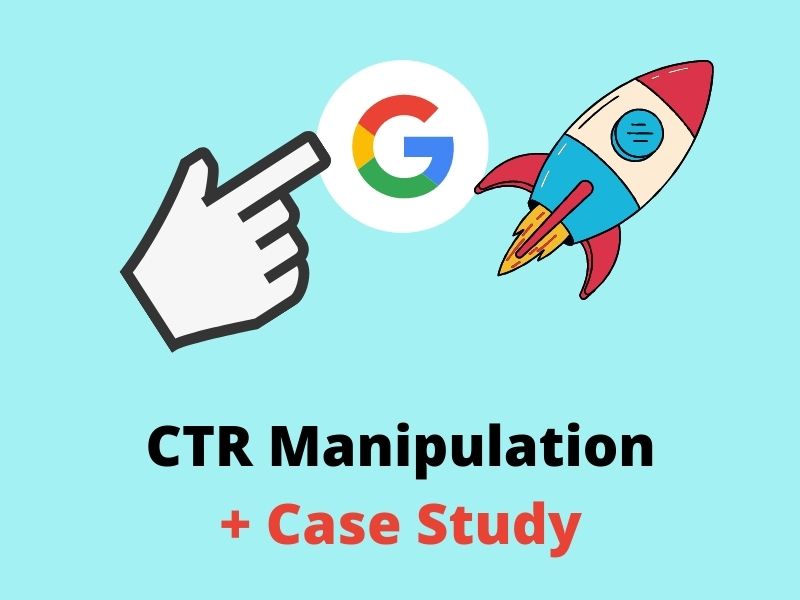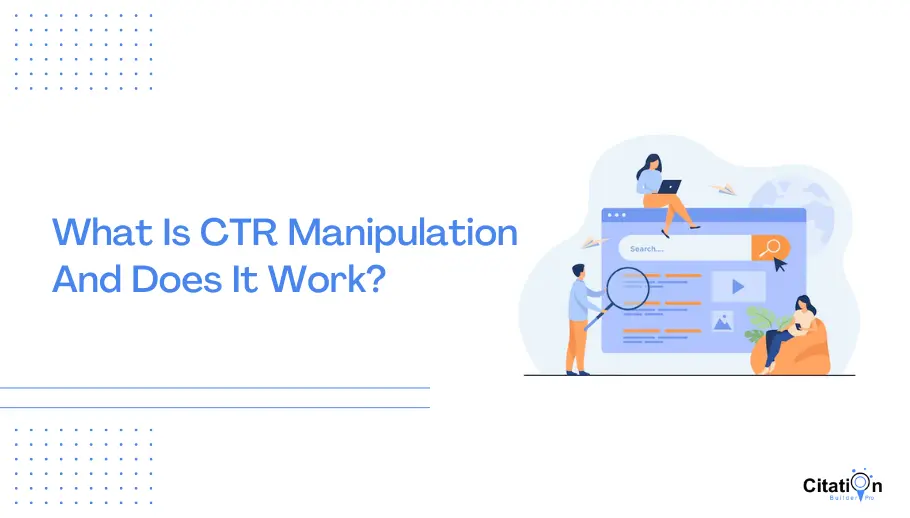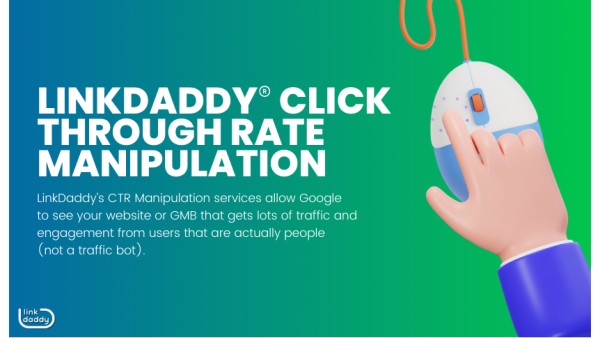Maximize Your Online Effect with LinkDaddy CTR Manipulation Solutions
Maximize Your Online Effect with LinkDaddy CTR Manipulation Solutions
Blog Article
Enhancing Organic Click-Through Fees With CTR Adjustment
The optimization of organic click-through rates (CTR) is a nuanced undertaking that hinges on understanding both individual psychology and efficient content discussion. By leveraging calculated adjustment techniques, such as powerfully crafted headings and visually appealing aspects, marketers can significantly boost individual interaction. The landscape is raging with misconceptions and oversimplifications concerning what truly drives CTR. As we discover the complexities of these strategies, it becomes essential to recognize the underlying concepts that can bring about continual success in catching audience attention. What absolutely distinguishes the reliable from the inadequate in this critical facet of electronic advertising and marketing?
Recognizing Click-Through Fees
Recognizing click-through rates (CTR) is vital for reviewing the performance of online advertising strategies. CTR gauges the percent of individuals that click a certain web link or promotion contrasted to the overall variety of individuals that view it. A higher CTR indicates that the material is engaging and appropriate to the target market, while a reduced CTR might signify a requirement for optimization.
To compute CTR, divide the variety of clicks by the number of perceptions and multiply by 100. If an advertisement gets 300 clicks out of 10,000 impressions, the CTR would certainly be 3%. This metric is critical for examining various elements of electronic marketing, including search engine optimization (SEO), email campaigns, and social media sites advertising.
Moreover, assessing CTR aids marketing experts determine which strategies produce the ideal outcomes and which need improvement. By concentrating on enhancing CTR, organizations can improve their web content's visibility and efficiency, resulting in boosted traffic and prospective conversions. Recognizing the nuances of CTR is foundational for any type of marketer aiming to maximize their online presence and make best use of roi (ROI)

The Psychology of Individual Habits
Customer behavior is significantly affected by emotional aspects that dictate how people connect with on the internet content. Understanding these variables is crucial for enhancing click-through rates (CTR) in organic search outcomes. Cognitive predispositions, such as the anchoring effect, play a crucial duty in shaping users' assumptions. When individuals encounter details, their preliminary impressions can greatly influence their succeeding judgments regarding relevance and reputation.
Emotional actions additionally substantially influence individual actions. Content that resonates emotionally can cause a sense of necessity or inquisitiveness, motivating users to click. Additionally, social evidence-- such as individual testimonials or ratings-- can improve depend on and urge engagement, as individuals usually look to the habits of others to notify their very own choices.
Moreover, the principle of shortage can drive clicks - CTR Manipulation. Limited-time offers or special material produce an anxiety of missing out on out (FOMO), engaging users to act quickly. Comprehending these mental motorists makes it possible for marketers to create more engaging web content that reverberates with their target market
Reliable CTR Control Methods
Leveraging mental insights can considerably improve click-through rates (CTR) through targeted manipulation techniques. One of one of the most reliable approaches is using engaging headlines that evoke curiosity or urgency. Wording titles as inquiries or integrating numbers can draw in more interest, triggering individuals to click.
Another technique entails maximizing meta descriptions to create a feeling of importance and immediacy. By plainly describing the remedies or advantages offered in the content, you can involve prospective readers and persuade them to click. In addition, using power words-- such as "exclusive," "confirmed," or "complimentary"-- can improve the appeal of your material.
Visual components likewise play an essential role. Integrating appealing images or thumbnails can attract users in and boost CTR. A/B testing various visuals can assist recognize which pictures reverberate finest with your target market.
Finally, guaranteeing that your web content promises deliverable worth results in greater CTR. When users regard that clicking will give them with significant understandings or services, they are more probable to involve. By employing these strategies thoughtfully, marketing professionals can successfully control CTR to their advantage while keeping honest standards.
Typical Misconceptions Regarding CTR
Numerous misunderstandings border click-through prices (CTR) that can lead online marketers to make illinformed choices. One prevalent myth is that a greater CTR constantly converts to better performance. While a high More Info CTR suggests that even more customers are clicking, it does not assure conversions or sales. Eventually, the efficiency of website traffic relies on the quality of the landing page and the significance of the material.
An additional usual idea is that CTR is an isolated metric. In reality, CTR should be evaluated in conjunction with various other efficiency signs, such as bounce rate and conversion price, to get an alternative view of project success.
In addition, some marketing experts assume that optimizing for CTR alone suffices. Nevertheless, focusing exclusively on CTR can bring about clickbait techniques that may attract clicks yet stop working to engage customers meaningfully. This strategy can hurt brand online reputation and lead to reduced retention rates
Last but not least, there is a concept that CTR strategies are generally effective. The fact is that optimal CTR methods can vary dramatically across sectors and target audiences, demanding visit their website tailored techniques for various market sections. Recognizing these myths is critical for developing reliable CTR strategies that line up with overarching marketing goals.
Gauging CTR Success
Although high click-through rates (CTR) can suggest effective engagement with material, gauging their real success requires a detailed evaluation of several aspects. Initially, it is necessary to comprehend the context in which the CTR is attained. A high CTR on a deceptive title may not translate to significant interaction or conversions, inevitably mirroring inadequately on the brand's reliability.
Second, examining the resource of web traffic is critical. Organic website traffic from search engines can signify a robust content technique, while clicks from unimportant sources may indicate a lack of targeting. Additionally, determining the subsequent user behavior is vital; analyzing metrics such as bounce rate, time invested in web page, and conversion prices can supply this hyperlink much deeper insights into the quality of the involvement launched by the CTR.

Verdict

The optimization of organic click-through prices (CTR) is a nuanced endeavor that pivots on understanding both customer psychology and effective web content presentation. CTR gauges the portion of users that click on a specific web link or advertisement compared to the total number of customers who watch it. A higher CTR shows that the web content is engaging and pertinent to the target audience, while a reduced CTR might indicate a requirement for optimization.
Concentrating exclusively on CTR can lead to clickbait tactics that might draw in clicks yet fail to involve customers meaningfully. Additionally, determining the succeeding user habits is essential; evaluating metrics such as bounce price, time invested on web page, and conversion rates can offer much deeper understandings into the quality of the interaction launched by the CTR.
Report this page